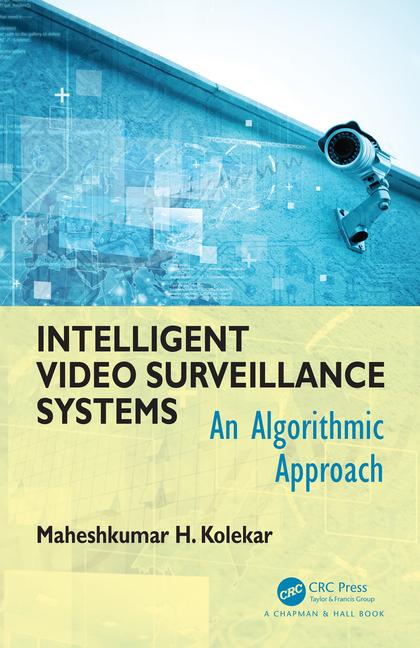The security world is constantly evolving and adapting to keep pace with new technologies and practices, such as the cloud, mobile, storage at the edge, and integrated solutions. Video management systems (VMS) are also changing to adapt to these technologies in order to maintain their key differentiators and remain competitive in an increasingly more competitive industry. At the same time, interoperability with hardware and, in some cases, other software is also a major factor for VMS providers — who for the most part are embracing emerging industry standards, such as ONVIF and PSIA, that are making their lives a bit easier.
The question that is on VMS providers’ minds is: What, if any, effects will new technologies and standards have on their products and the way they do business as a whole? To some extent, says Yoav Stern, president and CEO of DVTel, Ridgefield Park, N.J., that question probably should be reversed.
“This whole list can’t exist without VMS,” Stern says. “There are more technologies and therefore more need for a sophisticated operating system that connects them.”
While no one can say with 100 percent certainty what the future holds for VMS, providers definitely have perspectives on the subject.
The Cloud
Love it or hate it, the cloud is everywhere. Given the steadily growing list of companies that offer security cloud computing services in one form or another, it is not going anywhere anytime soon.
“The cloud has ramifications for many vendors and products in the industry, from cameras to NVRs, but can be especially important for VMS products that will eventually migrate into the cloud,” says Brian Lane, director of product marketing for San Francisco-based 3VR.
“The best example of the cloud that I’ve seen is Salesforce.com. There’s no resident software anywhere; it all resides on a server somewhere,” he says, “which is eventually where video management software could reside.”
“Video in the cloud isn’t quite there yet. With fiber optics, higher bandwidth and cheaper online storage costs, it will eventually make sense to manage video in the cloud. The only hardware needed would be the cameras themselves.”
For now, the technology is just too immature to be a real factor, and the cloud may never become a serious concern for VMS providers, Stern thinks.
“The cloud will never take a major part of the business, but will take a portion,” he says. “With the sophisticated functionality of VMS, part of the video can be managed on a server and part can be sent to the cloud. Right now, the cloud is less for storage but more for fault-tolerance and backups.”
With that in mind, Mahesh Saptharishi, co-founder and chief technology officer for Bedford, Mass.-based VideoIQ, says his company has not seen any change in its business because of the cloud. “We haven’t seen any disruption in the enterprise space, but the SMB market wants storage, particularly edge storage they can manage in the cloud,” he says.
Sean Dickinson, product marketing manager, Honeywell Video Systems, Melville, N.Y., says if done right and for the right application, the cloud does serve an important function for end users and therefore will remain a part of the video security conversation.
“The core requirements remain the same; however, cloud computing allows end-users to focus on their core business, while having third-party party dealers and service providers take care of their security needs,” he says.
Mobile
More than anything else, mobile has had the greatest effect on VMS providers, if only because end users have come to expect mobile access to their video. Anything short of that is simply unacceptable. As a result, nearly every VMS provider offers some sort of mobile access or application.
“Mobile is a key driver, and almost every VMS vendor has a mobile offering,” Saptharishi says. “The nature of how we use and interact with video is being pushed by mobile.”
VMS providers’ buy-in on the mobile side is almost entirely driven by end users, says Willem Ryan, senior product marketing manager, Bosch Security Systems, Fairport, N.Y. “Mobile applications have quickly become a powerful addition to a standard VMS or an independent system on its own. The proliferation of smartphones and tablets has driven the need for instant and mobile access to video,” he says.
In some cases, mobile apps can play a large part in integrators’ and end users’ choice of VMS, Dickinson says. “Mobile provides a wider range of observation possibilities for improved proactive surveillance and issue resolution, and the technology has also become a competitive differentiator for manufacturers,” he says.
While many VMS providers have offered mobile apps for some time now, those apps have only recently evolved into what end users expect their apps to be, Stern believes.
“Mobile apps are here,” Stern says. “The industry is working on apps with a different philosophy. Version 1 was simply what you had on your computer in app form. But you do things differently on different devices. The second generation of apps are being purpose-built for that application.”
With change as the norm in the mobile world, those apps will continue to evolve to meet end users’ constantly changing wants and needs, says Francis Lachance, product manager for Montreal-based Genetec.
“The demand to access information while away from the desktop, whether on a tablet or a smartphone, will continue to push new mobile applications developed by VMS providers,” he says. “Mobile apps will ensure operators can always be kept informed of the state of their system, and whether incidents have occurred.”
Ryan says mobile apps have not yet reached their full potential, but that they should do just that once technology catches up with demand. “Bandwidth is still an obstacle; however, the continual evolution of compression and transcoding technology will enable more effective use of mobile devices especially with high definition and megapixel resolution,” he says.
Storage at the Edge
A growing number of manufacturers offer cameras with built-in storage in the form of removable SD or microSD cards.
“Cameras that support edge storage are viewed as more of a competition to VMS rather than a complement,” Saptharishi says. “They play well in small camera-count installations. If a VMS company is looking to go down-market, they’re probably going to struggle because for little cost, edge storage in some sense is a disruptor for the mass market.”
Shahar Ze’evi, senior product manager for Westford, Mass.-based American Dynamics, says current edge storage solutions are not quite as practical as they could or should be. “There are many things you can do with storage at the edge that can create value. The problem is, they’re using SD cards, not storage purpose-built for security video,” he explains. “SD cards are designed for taking pictures or saving data. They’re not designed to save video constantly as is the case in security, so the SD card is going to break eventually, and you may end up losing all the video that’s stored on it.”
One interesting solution, Ze’evi says, is solid-state storage, but at the moment, it is not a viable solution. “Solid state is expensive, but as with everything, the cost will drop and it will get cheaper all the time,” he says. “It would be perfect for edge storage. It has functionality, but the technology isn’t there yet — or affordable.”
Lachance thinks that edge storage and VMS can and do work well together, especially when it comes to conserving all-important network bandwidth.
“The capacity of recording video directly at the camera level presents a lot of benefits, such as securing the video if the network connection is intermittent, and also offering more control over the way the video recording is transferred to the video archive with another option besides continuous real-time streaming,” Lachance says. “Video trickling is an innovative feature that leverages the recording capabilities of the edge devices — IP cameras and encoders — by providing the ability to transfer, on demand, the video from the edge and store it in the long-term archive.”
Working Together
As standards evolve and grow, VMS providers and others are watching to see how, if at all, they will impact both products and business practices. But the first question to ask is what the value is in having standards at all.
“Standards improve freedom of choice and flexibility in product selection and future protection of customers’ investments,” says Tony Yang, general manager, U.K., for Hikvision, who chairs ONVIF’s communications committee. “More importantly, interoperability standards can provide lower total costs of ownership, as more interoperable products reduce integration costs and individual products can be selected based on specific needs rather than compatibility with other pieces of the system.”
Interoperable systems, as opposed to proprietary systems, are good for integrators, end users and the industry as a whole, Stern emphasizes. “A lack of standards works against customers. It works well for gaining a competitive edge with unique or closed systems. They may have a technological advantage such as being faster or more efficient, but they are not conducive for price and therefore for customers,” he says.
To understand just what standards mean to VMS providers, it is important to understand how they have achieved interoperability in the past. Traditionally, it has involved writing separate APIs for each camera manufacturer, which can be time-consuming and detract from product development and improvement, says Dave Bunzel, executive director of the Physical Security Interoperability Alliance (PSIA).
“VMS companies shouldn’t have a large component of their business model tied up in writing APIs; they should focus on writing features,” Bunzel says. “But we don’t tell anyone not to use proprietary APIs, so we’re not competing with them. We look at those proprietary APIs as a more enhanced standard.”
By conforming to interoperability standards, VMS providers will be more able to concentrate on their solutions while at the same time, opening up a world of choices for end users when it comes to selecting the best equipment for their security systems, Yang says. “VMS vendors will be able to utilize the specifications available to ensure general interoperability with the devices. And they will be able to focus more of their efforts and resources on more of the critical applications on their products and services,” he says.
In short, interoperability standards have taken a lot of pain out of the programming and development side of the VMS segment.
While standards can make life easier for VMS providers, there’s still a little way to go before they’re “ready for prime time” and achieve their ultimate goal of plug-and-play, Saptharishi says.
“Standards are still catching up. They’re at the point where a company could claim compliance because there’s such a broad range,” he says. “Obviously, that will change in the future as these standards continue to grow and evolve.”
This article was orginally published in the print magazine as " Speaking the Same Language."










